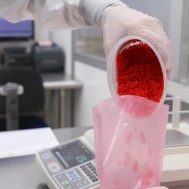When beginning a new part design, it’s critical to ensure that it functions accurately before integrating it into production. When an Apple Rubber customer came to us with a standard o-ring design for development, our engineers looked at both concentric and eccentric conditions to do a tolerance stack up. Our goal was to ensure that correct compression would be maintained regardless of shifting during application.
O-Ring Function Test
When our customer received all of the mating components for functional testing, we used our in-house setup to create a high-precision, single cavity tool to match the necessary dimensions and tolerances. Our engineers realized that some components were out of specification, causing the o-ring to fail in the applications. Using the Apple Rubber O-Ring Gland Calculator, we adjusted the o-ring to meet the actual dimensions required for the mating metal and plastic components.
O-Ring tooling is typically a cheaper option compared to plastic tooling. With their new o-ring, our customer was able to function test their new design and verify that it now met their requirements. Since our customer was using their o-rings for disposable applications, we knew automation assembly was going to be very important. Many assemblers use vibratory bowl feeds to feed silicone o-rings. This causes the silicone material to produce static electricity as it is vibrated, meaning the o-rings will stick together. Therefore, for the prototype tooling, we added a blast bead surface to help rough up the finished surface of the o-ring.
We also provided a coated o-ring for testing. Testing early in the design phase helps in the later phases of biocompatibility testing by preventing the need for further changes which would slow down the rest of the process.
Consideration for a Coated Part
For high volume automated installations, we recommend coating o-rings. This eliminates any variations in surface friction. The tolerance for hardness on a rubber part is typically +/-5 durometer points. This range can affect the surface friction of an o-ring, especially when running high volume installations. Any friction can impact the bowl feeders, causing delays or shut downs.
If you know that an o-ring will eventually go into high volume production, start with a coated part during development so the coating goes through regulatory approval. For silicone parts, we typically use a cured silicone top coat or a parylene coating. For nitrile or FKM, we typically use a PTFE coating.
Integrating Into Production
By using the higher durometer, the bead surface was all that was needed to feed the automation equipment. Since we had now reached the production stage, our engineers designed a multi-cavity tool to fulfill our customer’s current projections and 10-year projections. We completed the production tooling by providing a full process validation IQ OQ PQ. We then conducted installation qualification (IQ) on the equipment that was being used to run the mold, followed by Operational Qualification (OQ) that varied the major processing factors. Performance qualification (PQ) was then completed by measuring all o-rings to look at CPK and PPK.
Outcome
Apple Rubber works with customers starting at the initial design phase – from single cavity or prototype to multi-cavity production tool – with full process validation.
Through the testing process, we identified that gland volume was less than the volume of the o-ring. This caused higher compression and potential leak paths. We recommended at least an 85% volume fill to avoid failure. As a result, we were able to provide our customer with millions of functional o-rings.
Enjoying Solved and Sealed?
Check out our full reports on other rubber industry challenges here!
